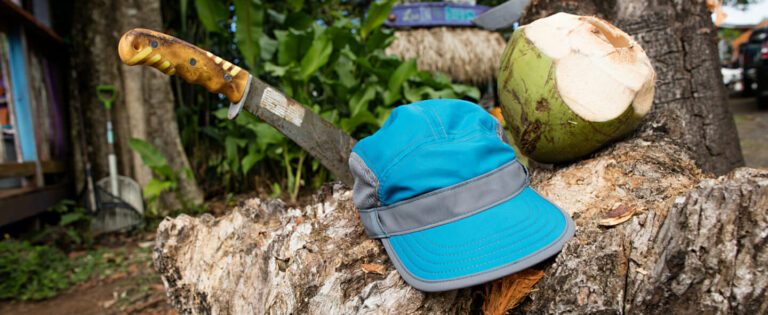
In the outdoor industry, softshells are often praised as the do-everything jacket: They’re highly water-repellent (sometimes even waterproof), windproof, highly breathable, extremely lightweight and conform to your movements, making them perfect for almost every situation. But, can softshell jackets really do everything? What are the differences between them and what should you keep in mind when looking to buy one?
Well, we’ve put together all the pertinent info for you. Welcome to our buyer’s guide to softshells!
What is a softshell anyway?
Well, that’s not an easy question to answer. The amount of softshells on the market is as large as the jackets are versatile. Whilst many jackets are reminiscent of hardshells, others are more like your classic jumper. Softshells make up the mid-layer between a fleece jumper and a hardshell jacket. In contrast to fleece jumpers, softshells are more wind and water-repellent but not waterproof to the extent that a hardshell is. Plus, they are more breathable and elastic.
Manufacture![]()

Most softshells are windproof. This is achieved by way of two manufacturing techniques. There are jackets with membranes, such as the Montura Ski Fighter Jacket with Gore Windstopper fabric, and there are jackets that have such dense fabric that they are windproof like the Tatonka Dorum Jacket. If you’re interested in membranes, we’ve put together an overview of the different ones available here. In other words, a jacket can be windproof as a result of a membrane or the weave. The advantage of a membrane, however, lies in the fact that it repels rain to a large extent, which is something a special weave can’t do. The disadvantage of a membrane is that it doesn’t allow as much water vapour to pass through, so you lose some of that breathability.
Which one is better is something we can’t answer. You have to decide for yourself! If you expect your softshell jacket to protect you from wind and light rains and remain breathable at the same time, a membrane would be your best option. If you’re looking for a jacket that is particularly warm and breathable, shields you from winds but not so much from rain, then a jacket without a membrane would be your best option.
If you’d prefer the one with a membrane, you should ask yourself the following question:
Why not a hardshell?
As was already mentioned, there are softshells on the market today that are pretty much up to snuff with hardshells. They may not be 100% waterproof (and seldom have watertight seams and zips), but they are much more breathable. Another difference you’ll notice is the material used, which is much softer and more elastic. This not only makes it more comfortable to wear but also allows for more freedom of movement. This is the main reason softshells have been so popular:excellent performance and a high level of comfort!
For those challenging multi-day trips with those inevitable heavy rains and no shelter in sight, there’s no way around a hardshell jacket. For all other endeavours, a softshell is a great alternative.
How did these softshells get so comfortable?
Like hardshells, Softshells have multiple layers. The outer fabric is an abrasion-resistant and water-repellent material that transports moisture well but doesn’t absorb any. For this purpose, polyester, polypropylene or polyamide is used. The second layer is often a membrane, which allows water vapour to pass through but repels wind. On the inside of the jacket, you’ll find fleece, fur or wool for comfort, freedom of movement and protection from the cold.
Areas of use
As a result of the plethora of fabric combinations, softshells are just as numerous as their possible applications. In order to find the perfect jacket, you should have a close look at the features. Softshells come equipped with underarm zips, helmet-compatible hoods, drawcords and other cool features, all of which can be pretty useful or pretty redundant, depending on what you need the jacket for.

If you’re looking into buying one for cycling, jogging, trail running or some other highly-aerobic activity, you should definitely get yourself a breathable jacket. If you tend not to cycle or run in the rain, you can do without the membrane. The most important factors are the fit and the venting options (e.g., pit zips). You can also opt for a softshell without a hood for the same reason as above. For cycling or climbing, however, it’s always a good idea to have a jacket with a drop back hem. The Arc’teryx Incendo Jacket, for example, is a classic running jacket: it’s got no unnecessary features and is extremely lightweight and packable. Plus, it will give you sufficient weather protection if you take the long way home!
Jackets like the MaruanM. from Maloja have a special combination of fabrics. The front is windproof, whilst the back is not. Instead, the back is made of breathable fabric, so it’s perfect for all cyclists, runners and ski tourers! For alpine activities, these kind of jackets won’t do, though. You need complete weatherproof protection! The Ultimate Eisfeld Softshell Hooded Jacket from Mammut, for example, comes complete with an adjustable, helmet-compatible hood, ventilation zips and a membrane that is built to withstand light showers with ease. Plus, it is significantly stretchier than a classic hardshell and thus perfect for alpine climbing routes.
Jackets like the Vaude Roccia Softshell Hoodie are intended for everyday wear. They are completely windproof and come with a hood that will shield you from any rain shower. Plus, they’ve got quite the simple, yet stylish design. In other words, with a jacket like that, you’ll get the weather protection you need without always having to take along that swooshing hardshell.
The sheer quantity of different softshell jackets on the market today can make it difficult to keep track. But, if you give yourself some time to think about exactly what you’re looking for, the chance finding the perfect jacket are pretty good!
If you have any questions, feel free to ask our experts in customer service. They are available during the week from 9 a.m. till 4 p.m. and can be reached by phone at 03 33 33 67058 or via e-mail.
There’s a lot going on in the climbing and outdoor industry. New products are being invented, existing ones are being reworked and improved, and we too, are learning more every day. And of course, we would like to share this knowledge with our customers. That’s why we regularly revise the articles at base camp. So, don’t be surprised if a post changes a bit in the coming months. This article was last edited on 02/11/2017.



